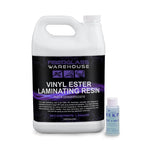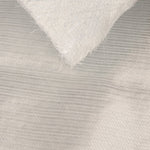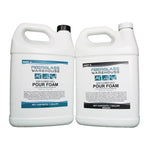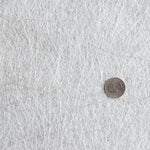You have no items in your shopping cart.
When it comes to fiberglass repair, few people have the hands-on experience of Captain Joe from Fish Bump TV on YouTube. Growing up in a boat shop, Joe has spent decades working with fiberglass and resin, accumulating knowledge that most DIY enthusiasts can only dream of. His YouTube channel has become a go-to resource for boat owners and fiberglass repair enthusiasts who want to learn from someone who truly knows the craft.
Whether you're dealing with a small crack in your boat hull or tackling a major fiberglass restoration project, Captain Joe's practical tips can save you time, money, and frustration. His approach focuses on real-world solutions that work in actual shop conditions, not just theoretical advice. If you haven't discovered his videos yet, you're missing out on some of the most valuable fiberglass repair content available online.
Essential Tools and Materials for Professional Results
The Ziploc Bag Technique for Repair Putties
One of Captain Joe's most ingenious tips involves using a simple Ziploc bag as an application tool for repair putties. This technique transforms what can be a messy, difficult process into something much more manageable and precise.
The key is choosing the right type of bag. Captain Joe emphasizes using a Ziploc bag with a strong edge rather than one with a pleated bottom. The pleated bags don't provide the same control and can make the application process more difficult. Here's how to execute this technique:
Fill the bag with your repair putty, then carefully snip a corner to create the desired opening size. The bag acts like a pastry piping bag, allowing you to squeeze the putty directly into cracks, holes, or damaged areas with remarkable precision. This method keeps your hands clean, reduces waste, and gives you much better control over where the putty goes.
This technique is particularly valuable when working on vertical surfaces or in tight spaces where traditional application methods would be awkward or messy. The controlled application also means you use less material overall, making your repairs more cost-effective.
Choosing the Right Resin: Vinyl Ester Advantage
Captain Joe has strong opinions about resin selection, and for good reason. His preferred choice is vinyl ester resin over both polyester and epoxy resins. This preference comes from years of experience seeing how different resins perform in real-world marine environments.
Vinyl ester resin offers superior chemical resistance and better adhesion properties compared to polyester resin. It's also less brittle than polyester, making it ideal for applications where flexibility and durability are crucial. While epoxy resin has its place in certain applications, vinyl ester provides an excellent balance of performance characteristics that work well for most boat repair situations.
The marine environment is particularly harsh on fiberglass repairs. Salt water, UV exposure, and constant temperature changes can quickly reveal the weaknesses in inferior repair materials. Captain Joe's preference for vinyl ester resin reflects his understanding of these challenging conditions and his commitment to repairs that will last.
Preparation Techniques That Make a Difference
Managing Roller Hair with Blue Tape
Even experienced fiberglass workers know the frustration of roller hair contaminating their work. Captain Joe's solution is elegantly simple: use blue painter's tape on new rollers before using them for the first time.
This technique removes loose fibers and hair that would otherwise end up embedded in your resin application. The blue tape pulls away these contaminants without damaging the roller itself. This small preparation step can prevent hours of sanding and rework later, especially on finish coats where smoothness is critical.
The type of tape matters here. Blue painter's tape has the right adhesive strength to grab loose fibers without being so aggressive that it damages the roller surface.
Efficient Cutting with Electric Tools
Large fiberglass repair projects often require cutting significant amounts of fiberglass cloth or mat. Captain Joe recommends using a zip snip type of electric cutter for these situations rather than relying on scissors.
This tool choice might seem obvious to professionals, but many DIY enthusiasts underestimate how physically demanding cutting large amounts of fiberglass can be with hand tools. Scissors become dull quickly when cutting fiberglass, and the repetitive motion can cause hand fatigue and cramping.
Electric cutters maintain consistent cutting performance throughout the job and significantly reduce physical strain. They also tend to produce cleaner, more precise cuts than tired hands wielding dull scissors. This precision becomes important when you're trying to achieve professional-looking results, especially on visible areas of the repair.
Advanced Application Techniques
Peel Ply for Superior Surface Preparation
One of Captain Joe's most valuable advanced techniques involves using peel ply to create an ideal surface for subsequent coats or bonding. Peel ply is a specially treated fabric that creates a barrier on the resin surface, resulting in a tack-free cure that's ready for the next application step.
The technique requires careful attention to detail. When applying peel ply, leave one edge slightly lifted to create an easy removal point. This small detail makes a huge difference when it's time to remove the peel ply. Without this lifted edge, removing peel ply can become frustratingly difficult.
When removing the peel ply, Captain Joe emphasizes pulling it off at a sharp angle rather than trying to peel it straight up. This angular removal technique reduces the risk of pulling up any of the underlying resin and creates a cleaner surface for the next step in your repair process.
The surface created by proper peel ply technique saves time and produces superior bonding for subsequent applications. This technique is particularly valuable in structural repairs where maximum bond strength is essential.
Proper Cleanup and Safety Procedures
Captain Joe's experience has taught him the importance of having proper cleanup materials ready before starting any fiberglass work. He recommends keeping a sealed bucket of acetone available specifically for cleaning rollers and brushes during and after the work session.
The sealed container improves safety by reducing vapor exposure and eliminating fire hazards associated with open acetone containers. However, Captain Joe emphasizes careful storage practices. Acetone is highly flammable and requires proper storage away from heat sources and ignition sources. Understanding these safety requirements isn't just about following rules—it's about creating a work environment where you can focus on quality results without worrying about safety hazards.
Learning from Experience
Captain Joe's tips represent decades of trial and error, learning what works in real-world conditions rather than just theoretical situations. His background in a professional boat shop environment means his advice has been tested under demanding conditions. The value of this experience-based knowledge cannot be overstated.
His YouTube channel continues to be an invaluable resource for anyone serious about learning proper fiberglass repair techniques. The combination of clear explanations, practical demonstrations, and real-world applications makes his content particularly valuable for both beginners and experienced repair enthusiasts.
Building Your Fiberglass Repair Skills
Take time to explore his video content, practice these techniques on test pieces, and gradually incorporate them into your actual repair projects. The investment in proper technique and quality materials will pay dividends in the durability and appearance of your finished repairs.









